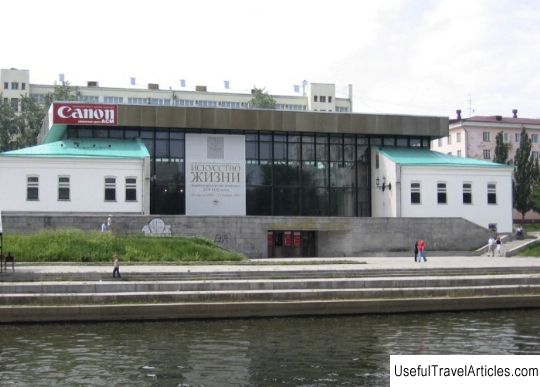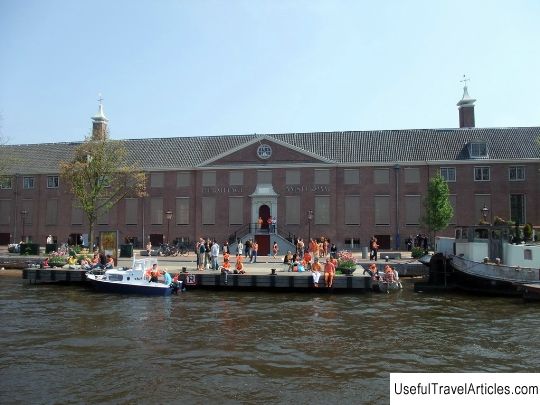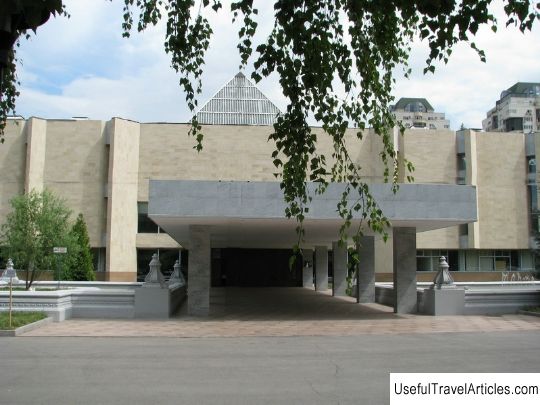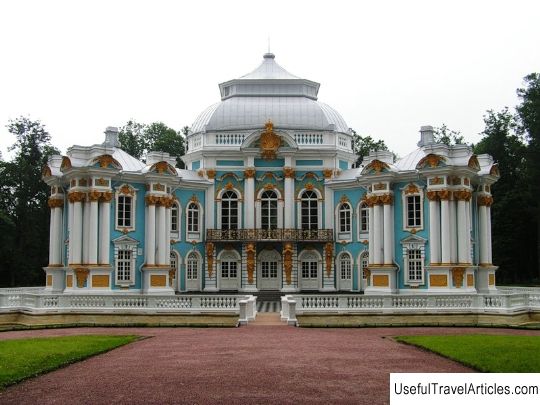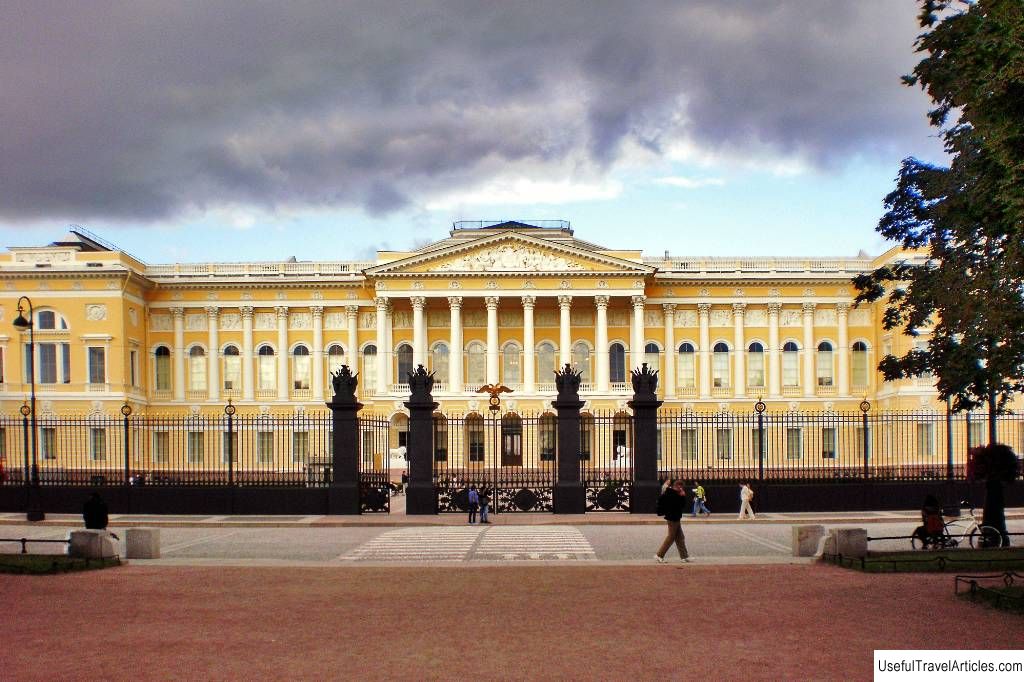Hermitage description and photo - Russia - St. Petersburg: St. Petersburg
Rating: 9,2/10 (5895 votes) 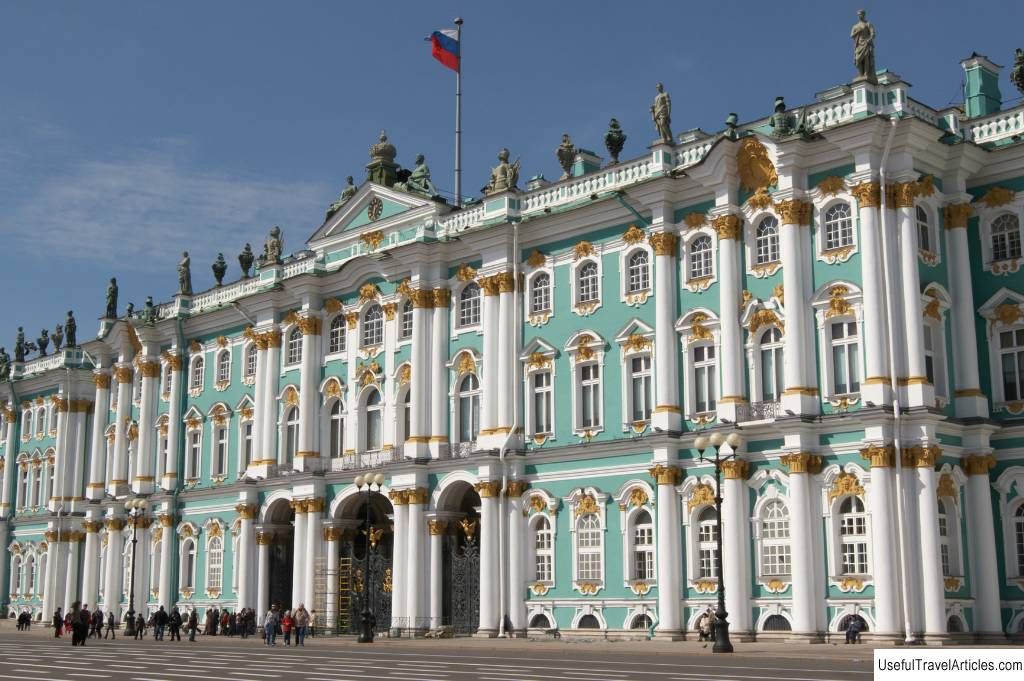
Hermitage description and photos - Russia - St. Petersburg: St. Petersburg. Detailed information about the attraction. Description, photos and a map showing the nearest significant objects. Photo and descriptionOne of the most famous sights of the northern Russian capital is the State Hermitage. It is one of the twenty most visited museums in the world. In its three hundred and sixty-five halls masterpieces of fine art from different eras are presented, you can also see a rich exposition of works of decorative and applied art. The main museum complex includes several buildings connected with each other. In addition, the museum has several other objects at its disposal (the General Staff Building, the Menshikov Palace and others). Catherine II became the founder of the museum. The relatively small art collection she acquired laid the foundation for the museum's collection. This collection was originally housed in a small wing of the palace, which was called the Hermitage. Its name, translated from French, means “a hermit's shelter.” Currently, the museum's collection numbers about three million items . Formation of the museum collection As mentioned above, the collection of the famous museum was started by Catherine II ... This happened in the mid-60s of the 18th century . Several hundred paintings were handed over from Berlin to the Empress as debt repayment: before that there was an unsuccessful attempt to supply food to the Russian troops, so the suppliers owed a fairly large amount of money. The total cost of the paintings given to the Russian ruler from a private collection was about two hundred thousand thalers. The exact number of works of art is controversial. There is a version that three hundred and seventeen paintings were transferred; according to another version (which, however, is not considered reliable by historians), the empress received only two hundred and twenty-five works of art. Among them were the canvases of Rubens and Rembrandt . Of the several hundred canvases handed over to the empress, the museum currently houses about a hundred paintings. The collection began to be replenished already at the end of the 60s of the 18th century. Then about six hundred new paintings were acquired. Their authors were Dutch and Flemish painters, as well as Italian and French masters. In the early 70s, a magnificent collection was acquired that belonged to one of the richest people in France - Pierre Crozat . It consisted of four hundred paintings, each of which was a real masterpiece. In particular, among them were the works of Titian and Giorgione . At the end of the 18th century, the acquisition of new collections continued. In particular, at the end of the 70s, a collection was bought that belonged to the British Prime Minister Robert Walpole . Around the same time, many antique sculptures were bought from one of the English bankers. In the 70s of the 18th century, construction began on a new building designed specifically to house the rapidly growing collection. Construction work was completed at the end of the 1980s. This is how the building appeared known today as the Old (or Big) Hermitage. In the second half of the 1890s, the collection of the Empress already consisted of three thousand nine hundred and ninety-six paintings. Some of them were painted by prominent painters of that era especially for the Russian ruler. It should be noted that her collection included not only paintings: she acquired two libraries of prominent thinkers of that time and a magnificent collection of carved stones. Museum in the XIX-XX centuries At the beginning of the 19th century, the principle of replenishing the collection changed somewhat. Not only entire collections of works of art were acquired, but also individual masterpieces. Particular attention was paid to outstanding authors, whose works for some reason were absent from the collection. Until the middle of the 19th century, only a select few, who had received a special pass, could see the collection. In particular, Alexander Pushkin became one of these favorites. Moreover, he received a pass not because of his achievements in the field of literature, but under the patronage of Vasily Zhukovsky , who was at that time the teacher of the imperial son. But in the middle of the 19th century, the situation changed. A special museum building was erected, where the collection was housed, opening it to the general public . In the 80s, the attendance of the museum reached about fifty thousand people a year. Speaking about the development of the museum, one cannot but mention the name of Andrey Somov . He has been the senior curator of museum exhibits for twenty-two years. He was engaged in the research and cataloging of exhibits, the result of this work was a detailed catalog. The senior curator carried out a huge work to replenish the museum collection. At the turn of the 19th and 20th centuries, it turned out that some of the canvases acquired by Russian emperors for fabulous money actually cost much less, since they were not the works of legendary painters , but only by the talented works of their students. In the post-revolutionary period, the collection of the museum has increased significantly. This included nationalized works of art from private collections . Numerous interior items of the Winter Palace were transferred to the museum, and the treasures of the Baburid dynasty came from there, once presented to the Russian ruler by the Iranian Shah. The museum received works art and other ways. In particular, at the end of the 40s, many canvases were transferred to the museum collection as a result of the redistribution of works of art between Moscow and Leningrad museums. However, along with the replenishment of the collection, the opposite process took place: for example, at the end of 20 -s of the XX century and in the 30s of the same century some of the masterpieces were sold abroad . A number of paintings by Titian, Rubens, Poussin, Rembrandt and some other masters have been lost: they were transferred to one of the Moscow museums. In wartime, the most valuable exhibits (about two million items) were evacuated; for several years they were in the Urals. The museum was actually closed, its basements were used as bomb shelters. However, even during the war years, the museum staff continued to engage in scientific activities. Sometimes they gave lectures. Soon after the end of the war, the museum reopened, all the exhibits returned to their places. Some of them were in need of restoration, but none were lost. Moreover, the collection has been replenished with trophy works of art. In the late 50s of the XX century, trophy exhibits were returned to Berlin. True, in the post-Soviet era it turned out that not all trophies were returned: some of them continued to be stored in museum basements, moreover, officially these works of art were considered lost in the course of hostilities. Currently, these masterpieces are part of the permanent museum exhibition. In the 2000s, a major theft took place in the museum: more than two hundred valuable exhibits were stolen (ancient icons, silver items, etc.). The kidnapper was one of the employees. Some of the stolen exhibits were returned. Museum buildings The buildings that make up the museum complex are themselves monuments of history and architecture. - The famous Winter Palace was built in the middle of the 18th century. Construction began in the 50s of the named century and ended in the early 60s. The author of the project is Bartolomeo Francesco Rastrelli. The building was built in accordance with the canons of the Russian Baroque era of Elizabeth Petrovna. The interiors are designed in a slightly different style: individual design elements here correspond to the Rococo (French) style. - Construction of the Small Hermitage building began in the mid-1860s and was completed in the middle 70s. The authors of the project are several prominent architects of that time. Part of the building is a garden located on the second floor level (known as the Hanging). - Old Hermitage (also called the Big) was built much later than the buildings described above. Construction work began in the 40s of the 19th century, and ended in the early 50s. - Around the same time period, the New Hermitage was built. The author of the project is Leo von Klenze. The building was built specifically for an art museum open to the general public (the first such construction in the country). As you explore the building, pay attention to the portico and the giant statues that adorn it. - The Hermitage Theater was built and opened in the 1880s, but the facade was completed only at the beginning XIX century. The author of the project is Giacomo Antonio Domenico Quarenghi. The building was built in accordance with the canons of ancient architecture. Above the foyer, there are still 18th century rafters and wooden beams from the same period.                            We also recommend reading Ethnographic Museum ”Life of Kerch” description and photos - Crimea: Kerch Topic: Hermitage description and photo - Russia - St. Petersburg: St. Petersburg. |
